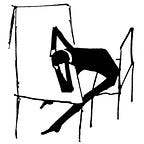On the Origins of Asceticism
As Best Exemplified by Saints
How does one explain the denial of the world and of will by saints? What is it that enables these people to renounce all worldly indulgences? Religion answers by means of the miraculous but such answers belong to the domain of the ludicrous nowadays.
How is it possible for the “bad man” to be transfigured into the saint, into, “the good man”?
A Problem of Atavism
My proposition is that the problem of the saint, of the Guru, in general of the sage who renounces all worldly pleasures, is an instance of atavism of the greatest degree.
Atavism is a well-known biological phenomenon, whereby an ancestral genetic trait reappears after being lost through an evolutionary change in previous generations.
And there is ample evidence to believe that such a phenomenon too, applies in the realm of human psychology. Moreover, as the science of epigenetics, further develops, we will likely have a clear view as to the specific chemical and biological processes here in play. A most curious development, which might finally solve the problem of inheritance itself.
Incidentally, atavism, is probably how we can best explain the more vile and wicked serial killers’ motives: originally, immense cruelty was associated with immense joy. The current state of humanity has outgrown such an immemorial way of feeling and thinking but now and then certain people are born with a retarded configuration of their brains, which seeks just this antediluvian feeling as the highest expression of their will to power.
It would be wrong therefore to equate such asceticism as shown by the saint or the Indian Guru as originating in a purely intellectual decision. Intelectuallisim is usually a phenomenon that happens as an after shot of much deeper compulsions. It is an effect and consequence of more powerful underlying causes. A weak and pale aftereffect in comparison. As we well know, the neocortex usually acts to satisfy the limbic system and not the other way around.
Therefore: what matters in such situations, what matters in every situation in the final analysis, is drives and instincts. Such asceticism must be the manifestation of some sort of archetypical drive that must have been cultivated during our long prehistory.
We know that starvation was a common problem that our ancestors faced, especially in ice age Europe. We also know that at the very least, since the advent of behavioral modernity human communities were capable of quite some sophisticated abstract thinking. Hence we can safely assume the origins of customs (which consisted of the only truth and reality for this type of humanity) to lie at the very least around this period.
And so it must have been a kernel, recurring dictum of the customs of at least some of the hunter-gatherer communities of the time to eat less, to be less extravagant with resources, to copulate less, to engage less in any activity whatsoever, in short, laying down and doing nothing was accorded a very high value. These were all associated with the Good of a community, particularly around wintertime, and they greatly facilitated the community’s survival in times of hardship.
So what essentially happens today in every hermit who leads an ascetic life is basically a revival of a very old sort of archetype, whereby solitude, fasting, and sexual abstinence were considered useful. Nay, it might be said that they probably become hermits only because they are born with a particularly intense configuration of these instincts.
And finally, to conclude with a passage from Beyond Good and Evil:
But nowhere should one resist interpretation more: no other type has yet been surrounded by such a lavish growth of nonsense and superstition, no other type seems to have interested men, even philosophers, more. The time has come for becoming a bit cold right here, to learn caution — better yet: to look away, to go away.
Let us ask what precisely about this whole phenomenon of the saint has seemed so enormously interesting to men of all types and ages, even to philosophers. Beyond any doubt, it was the air of the miraculous that goes with it — namely, the immediate succession of opposites, of states of the soul that are judged morally in opposite ways.
It seemed palpable that a “bad man” was suddenly transformed into a “saint”, a good man.
Thanks for reading.
As always, constructive criticism and discussion of any kind are highly appreciated.
Remember what physics teaches us: One’s goal is to be less wrong about everything.
